review Dell’s Latitude 10 represents the company’s latest effort to bust into the enterprise tablet space which Apple’s iPad currently dominates. But is this Windows 8-equipped slab enough to challenge Cupertino’s near-monopoly position in enterprise tablet computing? Read on to find out.
Design
The first thing you’ll notice when you buy a Dell Latitude 10 is how much of a hybrid between laptop and tablet form factors the unit is. Right from the start, this impression is reinforced when the packaging for the tablet arrives at your office. Apple’s full-sized iPads come in small, roughly A4-sized boxes, commensurate with their size, while the iPad minis come in even smaller boxes almost reminiscent of mobile phone packaging.
Not so the Latitude 10. It comes in one of those traditional Dell laptop boxes, with cardboard packaging inside and a traditional (if small) power brick, ‘resource’ DVD and instruction/warranty manuals all wedged in. Sure, there’s a lot of empty space in the box, but we were immediately struck with how different this was from the premium Apple iPad experience. This is clearly a different class of tablet than the iPad — even if they’re designed in practice for most of the same purposes.
The impression of laptop-ness is reinforced when you pick up the Latitude 10. The first thing you notice is the weight. The model we reviewed clocked in at 684g, which is virtually identical to Apple’s full-sized iPad at 652g (or 662g for the 3G version). However, the Latitude 10 feels bulkier. Part of this is its thickness; it’s 10.5mm thick at its thickest end, compared with the iPad’s 9.4mm, and part of it is also its different dimensions. The iPad and Latitude 10 both have about a 10″ screen, with only a few millimetres’ difference, but where the iPad has an aspect ratio of 4:3, the Latitude 10 goes for an narrower 16:9 footprint.
What you end up with because of this design is something which feels a lot like an elongated iPad, a little heavier and with a tapering rubbery back. It’s not a bad feeling, but it’s definitely not stylised the way the iPad is; it’s very reminiscent of the kind of enterprise-class laptops (such as the Latitude class for which the tablet is named) which have long been a feature of Dell’s range.
The next thing you’ll notice is how brilliant, clear and inviting the Latitude 10’s screen is. It doesn’t have that high a resolution — only 1366×768, compared to the full-sized iPad’s 2048×1536 — and if you get up close, you can see the pixels. However, that doesn’t stop the Latitude 10’s screen from being vivid and lovely, with great viewing angles and a brightness that serves it well even outside in the daytime.
Windows 8’s bright colours play very well into this aesthetic, and we like the combination of Dell’s rubbery dark grey back, hard plastic front and brilliant screen quite a lot. This tablet is quite a looker.
Now let’s get into the ports. If you hold the tablet horizontally facing you, on the right side at the top sits a 3.5mm headphone jack alongside a USB port (we know — a USB port on a tablet — how novel!) and a mini-HDMI output jack. On the left-hand side sits a small rubbery volume rocker, above a small security lock slot. On the bottom sits a largish power connector to charge or dock the Latitude 10, and you can also charge it or sync it with a micro-USB slot next to that.
On the top left is a very large slot for smartcard reading, while on the top right sits a memory card reader, next to a small power light, the unit’s power button, and a screen rotation lock button. Below the screen is a small physical Windows button which returns you to Windows 8’s home screen. Above it is a small front-facing camera. On the back you get a fingerprint reader (we know!), the unit’s main camera and the huge slot for its removable battery. There are also two small speakers on the back.
Wow. That was a big list.
There are three things to take away here. Firstly, the Latitude 10 is more from the Dell laptop aesthetic than from the iPad or Android tablet class. However, that’s not necessarily a bad thing — this is still quite a comparable unit in terms of its actual size and weight to a mainstream tablet like the iPad. Lastly, this is a very full-featured unit — it has more ports and little extras scattered around than any other tablet we’ve reviewed so far.
Overall, we really like the design of the Latitude 10, although we would like it to be lighter (we’re used to the Nexus 7 and iPad mini at the moment).
Features
As with its design, under its hood the Latitude 10 is surprisingly full-featured for a tablet of this nature. It runs on an Intel Atom CPU at 1.8GHz, and comes with 2GB of RAM. We believe our unit came with a 64GB SSD disk drive, of which only 36.5GB was available for use when we received it (it comes with the full version of Windows 8 installed — no Windows RT here).
Apart from that, what you mainly need to know is that its basic battery is a 2-cell 30W/hr model, but you can also get a 4-cell 60W/hr model to swap in, which will pad out the back substantially. The front-facing camera is a two megapixel model and the back is an eight megapixel model. The headphone jack can also be used as a microphone input, and you can also insert a SIM card into the model for mobile broadband. Of course it supports the 802.11 Wi-Fi standards, and the card reader does full-sized SD cards. You can also get a couple of optional docking/stand/keyboard units, although our unit didn’t come with one. And the screen is the ubquitous Gorilla Glass.
What this all adds up to is a quite highly-specced tablet with a clutch of enterprise features not found on other tablets that nonetheless isn’t quite as powerful as a laptop.
And of course, there’s one more important thing to consider here: You also get a full version of Windows 8, which can run every version of every popular Windows app you can think of, and which allows the Latitude 10 to be used as a PC in every sense, especially if you attack a keyboard and mouse.
This is a killer feature which we know many enterprises will really love. You simply can’t easily, without a decent network connection and some virtualisation/emulation software (many people use Citrix) use an iPad as a fully-featured laptop; iOS just isn’t set up to match all of Mac OS X’s features. But the Latitude 10 can be used for that purpose; it’s — frankly — its main advantage over the iPad and the Android tablets.
Performance
There is a lot to like about the Latitude 10’s performance.
For starters, its touchscreen is great. As we’ve mentioned previously, it’s vivid, colourful, and you don’t really feel the lack of a higher resolution as you find on the iPad. Touch-navigating around Windows 8 on the Latitude 10 is a breeze and represents one of the best Windows 8 experiences we’ve had so far. It’s even easy to use the touch interface to navigate the traditional Windows desktop environment, and we enjoyed doing so.
The typing interface on the Latitude 10 is particularly lovely, with great sound feedback, and you can easily get up to quite a clip typing on it. We actually like the Latitude 10/Windows 8typing interface a great deal more than we do the touch-typing interface on the iPad — unlike with iOS, it’s pretty close to a full-sized keyboard experience, and you can type a lot faster.
The USB port, a key feature of the Latitude 10, works perfectly — we pulled our Apple keyboard and Logitech gaming mouse out of our iMac and plugged them in to the Latitude 10. They worked perfectly and instantly with no setup, pleasing us mightily.
In general, the performance of the unit’s user interface was very fast, and we had trouble getting it to do anything at a pace we found slow. There wasn’t any jagginess or slowness, and we really enjoyed playing with the unit’s apps and browsing our web sites, taking notes and so on. Videos, including HD videos, streamed fine from YouTube and in general we were very happy.
The usual caveats regarding the performance of the tablet for 3D games applies; its graphics card is labelled as an “Intel Graphics Media Accelerator”; so not hugely powerful ;) You’ll be able to easily play low-end games such as Plants vs Zombies and older games, but don’t expect much at all in terms of 3D graphics performance for modern titles. This is a tablet, not even a proper laptop. And the Atom processor won’t help.
Both cameras on the unit are actually pretty good, surprisingly. The front-facing camera is easily decent enough for very good video-conferencing on the Latitude 10, and the rear camera gives almost all of the modern smartphone cameras we’ve seen recently (with the possible exception of the models on the iPhone 5 and the Nokia Lumia 920) a solid run for their money. Colours are reproduced very faithfully and richly and the unit is very good at picking up light, even at night. We really don’t think you will be disappointed by the quality of the Latitude 10’s photography.
Lastly, the Latitude 10’s battery life is also pretty solid. If you’re using the model all day as a laptop replacement or a demo unit, for example, you probably won’t run out of juice on the first day, and you’ll probably get a decent shot at making it quite a long way through the second day. If you’re only using the unit as a tablet sporadically, it’ll make it full most of a week before it needs to be charged. This behaviour is fairly similar to the iPad and Android tablets we’ve reviewed, although be prepared to suck battery a bit quicker of you’re using full-Windows desktop apps and not just the Metro versions where they exist. We didn’t get to test it, but we’re sure the unit’s mobile broadband capabilities would also suck power more quickly. The Latitude 10 also charges quite quickly from its brick — you can get much of its juice back in an hour or so.
So what’s bad about the unit? Well, to be honest, not a huge amount. Its speakers are really quite underpowered, but then so are the speakers on most tablets. It’s a little heavier than we’d like and it has a huge black border around its screen; this isn’t ideal. There’s no reason why its physical Windows key couldn’t be capacitive instead, and we don’t like the way Windows 8 hogs so much hard drive space by default.
The volume rocker is also fidgety to use, and the 16:9 display aspect feels a bit weird in a tablet, for our money — at the moment, in the 10″ form factor, we really prefer a 4:3 aspect ratio. It’s perhaps not as good for watching videos, but it just feels better for everyday use. This may be a personal preference thing.
Conclusion
We were really prepared to dislike the Latitude 10. Few Windows 8 devices have tickled our fancy in general recently, and Dell isn’t always known for its stellar build quality, which has varied greatly over the years. Plus, the company has had a chequered past when it comes to smartphones and tablets.
However, with the Latitude 10, Dell has gotten pretty much everything right in an enterprise tablet. It has attributes which the iPad doesn’t have, such as a full-featured desktop operating system that can run traditional apps, alongside a USB port and enterprise-ready features such as smartcard and fingerprint readers, but it weighs and measures about the same. It’s pretty much everything a Windows-focused organisation would want to deploy to its staff.
This unit starts about the same price as an iPad, but can range higher. It starts at $649 — and for that price, you don’t get some of the features mentioned in this review, such as the fingerprint reader or larger battery — and ranges up to $1,049 for a model which comes with all the bells and whistles and a copy of Office Home & Business 2013.
We’re far from convinced that organisations really want Windows 8 tablets; although there has been quite a lot of interest in this style of tablet deployment from Australian companies, real-world examples where such units have been actually deployed are thin on the ground. The laptop/tablet convergence story hasn’t quite been written yet in the enterprise, and may not be for some time.
But the Latitude 10 represents a great place to start for those organisations thinking of going down the Windows 8 tablet path. It’s a very solid device, and worth checking out.
Image credit: Dell

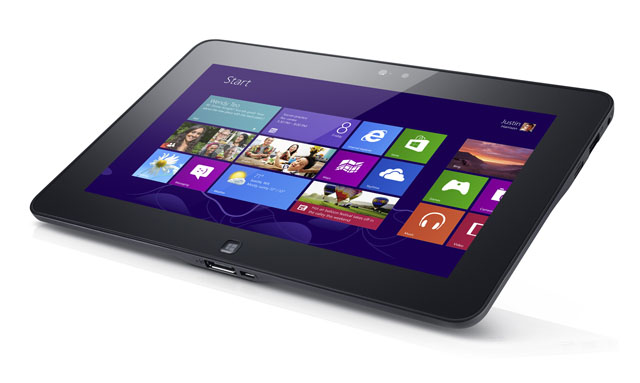
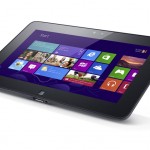
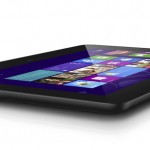
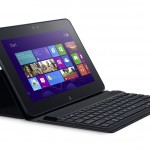
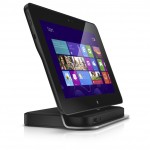
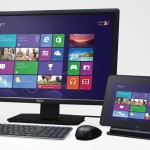
This looks nearly perfect for what I’ve been tasked to do at work, but one of my requirements is a built-in GPS receiver. It’s not mentioned in this review if the Latitude 10 has one, and Dell’s site is useless – I can’t find a detailed spec sheet anywhere. Renai do you know if this unit has (or is available with) GPS?
If anyone else can suggest a locally available Windows 8 tablet (not RT) with GPS and ideally 3G I’d be very grateful, they’re harder to find than I expected!
We’re using one of these at work at the moment. It’s being used both as a tablet, and when at the desk, plugged into a dock with a 24″monitor, keyboard, mouse etc. In this desktop mode, we’re running a XenDesktop, and it has been in production like this for about a month and the user is loving it.
The only criticism is graphics performance, but for the most part it’s ok.
I’m still using my iPad & Macbook Air 11″ though. You still can’t drag me away from my apps & music etc. I’m too wedded to the iOS stack…! Maybe one day Windows 8 devices will match both the hardware experience _and_ content.
We had a demo model for a few weeks at work. Noone was greatly enthused. The build quality is fairly low – similar to a cheap android tablet.
Re: build quality, I disagree. I have tested many Android tablets, and the L10 is generally better quality (excepting the Nexus line).
This tablet is the real deal. We’ve just completed an extensive RFP for tablet computers and we put every device we could get our hands on through a rigorous review. This includes the Apple iPad (which I have substantial experience using) and this device was the clear winner. We selected it as our device for all the reasons in this review (and more that apply to school districts). We intend to deploy this to 30,000+ students and staff.
Comments are closed.